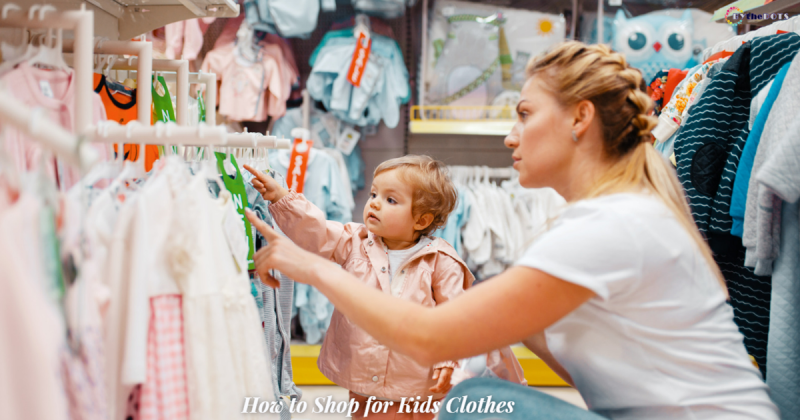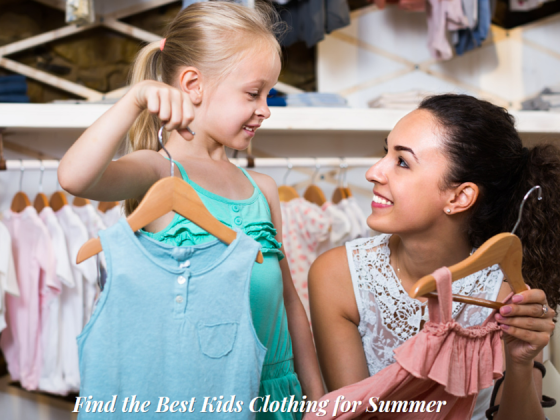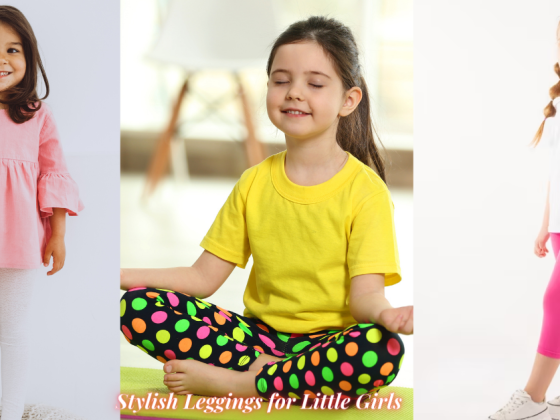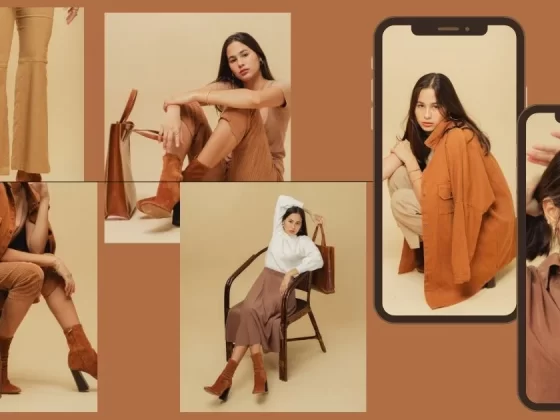Shopping for kids’ clothes can be a fun and exciting task for a parent, but it can also be overwhelming with so many options available today. This article aims to share some techniques on how to shop for kids clothes and make the process easier and more enjoyable for you. Navigate the world of children’s fashion, ensuring your kids stay cool, comfortable, and stylish all year.
How to Shop for Kids Clothes
Consider the Material
When shopping for kids clothing, the material of the clothes plays a crucial role. Breathable materials like cotton or bamboo are excellent choices for summer clothing.
- Cotton: Cotton is a natural fiber that allows air to circulate and move freely through the fabric, which makes heat more bearable. It’s also highly absorbent and can wick moisture away from your child’s skin.
- Breathability: Cotton allows air to circulate and move freely through the fabric, which helps to dissipate heat and keep your child cool during the hot summer months.
- Absorbency: Cotton is highly absorbent, meaning it can wick moisture away from your child’s skin. This helps to keep your child dry and comfortable, even on hot, sweaty days.
- Durability: Despite its softness, cotton is a durable material that can withstand frequent washing and wear. This makes it a practical choice for children’s clothing, which often needs to be washed more frequently than adult clothing.
- Hypoallergenic: Cotton is a hypoallergenic material, making it a safe choice for children with sensitive skin or allergies.
- Bamboo: Bamboo fabric is known for its breathability and moisture-wicking properties. It’s also incredibly soft, making it comfortable for kids to wear.
- Softness: Bamboo fabric is incredibly soft, often likened to cashmere or silk. This makes it comfortable for kids to wear, especially those with sensitive skin.
- Breathability and Moisture-Wicking: Like cotton, bamboo fabric is breathable and has excellent moisture-wicking properties. This helps to keep your child cool and dry during the summer months.
- Durability: Despite its softness, bamboo fabric is durable and can withstand frequent washing and wear. It also retains its shape well, making it a smart investment for parents.
- Hypoallergenic: Bamboo fabric is naturally hypoallergenic, making it a great choice for children with sensitive skin or allergies.
- Eco-Friendly: Bamboo is a sustainable crop that grows quickly without the need for harmful pesticides or fertilizers. Clothing made from bamboo fabric is biodegradable, offering a smaller carbon footprint.
Think About Comfort
Comfort is paramount when shopping for kids’ clothes. Here are some factors to consider:
1. Easy-to-use closures:
Clothes with snap closures and zippers are not only convenient for kids to dress themselves, but they also make it easier for parents to change diapers or help younger kids get dressed. Here are some points to consider:
- Snap closures: These are commonly found on baby clothes and are easy to fasten and unfasten. They’re especially handy during diaper changes.
- Convenience: Snap closures are quick and quiet, making dressing easier. They’re particularly useful for nighttime changes, as they cause minimal disturbance.
- Durability: Snap closures are durable and can withstand frequent washing and wear.
- Safety: Unlike buttons, snap closures are securely attached and pose less of a choking hazard.
- Zippers are another type of closure that is quick and easy to use. They’re a good choice for older kids who are learning to dress themselves. Here are some additional points to consider:
- Independence: Learning to use a zipper is an important step in a child’s development. It promotes independence and prepares them to wear their own clothes.
- Fine Motor Skills: Using a zipper enhances a child’s concentration, focus, and fine motor skills. It also strengthens the finger muscles and allows them to practice hand-eye coordination.
- Durability: Zippers are very durable. Unlike buttons, they are not liable to drop off or pop unexpectedly. They also won’t leave gaping spaces and gaps, which you can sometimes get between buttons.
2. Fit:
The fit of the clothes is crucial for your child’s comfort and mobility. Here are some tips:
- Loose enough for comfort: Clothes should be loose enough to allow your child to move freely. Tight clothes can restrict movement and may be uncomfortable. Here are some additional points to consider:
- Breathability: Loose clothes allow for better air circulation, which can help keep your child cool during the hot summer months.
- Ease of Movement: Loose clothes allow for greater freedom of movement, making it easier for your child to run, jump, and play.
- Not too loose: While clothes should be comfortable, they shouldn’t be so loose that they interfere with your child’s activities. For example, pants that are too long could cause your child to trip. Here are some additional points to consider:
- Safety: Clothes that are too loose can be a safety hazard. For example, long sleeves or pants can get caught on objects, posing a risk of injury.
- Appearance: Clothes that are too loose may not look as neat or stylish. They may also make your child appear unkempt.
3. Seams and tags:
The inside of the clothes is just as important as the outside when it comes to comfort. Here’s what to look for:
- Seams serve as the building blocks of garment construction. They join pieces of fabric, shaping the garment and determining its overall fit and silhouette. The quality of the seams influences the comfort and longevity of the garment, making them a critical consideration in fashion design and production. Here are some additional points to consider:
- Rough Seams: Rough seams can irritate your child’s skin. When shopping, feel the inside of the clothes to check for any rough or scratchy seams. Seams should be carefully done for a beautifully finished garment.
- Seam Placement: A curved seam will be differently treated than a straight seam. If it is an exposed seam,, as in pants, it will be different from an enclosed seam, as in a yoke or a collar.
- Seam Type: The selection of the correct seam type for a particular assembly is very important, as the improper selection of stitch type, seam type, or thread type can result in failure of the sewn seam and failure of the garment.
- Tags on clothing are important for several reasons. They provide information about care instructions, washing instructions, and size. Some clothing labels may also contain information about the materials used in making the clothing item or where the product was made. However, tags can also cause discomfort. Here are some additional points to consider:
- Tag Placement: Tags are usually placed at the back of the neck or the side of the garment. If these tags are causing discomfort, consider removing them.
- Printed Information: Some brands print information directly on the clothes to avoid this issue. This is a great alternative, as it provides the necessary information without the discomfort of a physical tag.
- Tagless Clothing: Some brands offer tagless clothing, which is another great option for children with sensitive skin.
Choose Bright Colors
Bright colors are not only visually appealing to kids, but they also have practical benefits for summer clothing:
- Heat Reflection: Lighter, brighter colors reflect sunlight, while darker colors absorb it. This is because light colors reflect most of the sun’s rays back into the atmosphere, while dark colors absorb these rays and convert them into heat. By choosing brightly colored clothes, you can help keep your child cooler in the sun.
- Visibility: Bright colors can make your child more visible, which can be especially useful in crowded places. Brightly colored clothes stand out more, making it easier for you to spot your child in a crowd. Plus, the bright colors make them more visible to others, including motorists, which offers an additional safety benefit.
- Mood and Behavior: Color has been shown to influence kids’ moods and behaviors. Bright and bold colors are known to create a sense of joy, energy, and positivity. According to color psychology, colors like red, yellow, and orange can evoke feelings of happiness and enthusiasm.
- Cognitive Development: Bright and cheerful clothing can stimulate cognitive development in babies and toddlers. As they look at and interact with these bright colors, they are developing important cognitive skills such as pattern recognition, visual tracing, and object differentiation.
Things to Consider Before You Shop
Before you start shopping, here are a few things you should consider:
1. Your Child’s Preferences
Understanding your child’s preferences is crucial when selecting kids’ clothes. Every child is unique, and their clothing requirements can vary based on factors like age, activity level, and personal preferences. If your child loves a particular color or pattern, try to incorporate that into their summer wardrobe. This not only ensures that the clothes you choose meet your child’s practical needs but also that they will be excited to wear them.
2. The Weather
The typical summer weather in your area should significantly influence your shopping decisions. If it’s usually very hot and sunny, opt for clothes with sun protection. Look for clothes made from fabrics that offer UV protection. Additionally, consider the breathability of the fabric. Materials like cotton and bamboo are breathable and can help keep your child cool during the hot summer months.
3. Your Budget
Setting a budget before you start shopping can help you avoid overspending and ensure you get the most bang for your buck. Keep in mind that while it’s important to invest in high-quality items, especially for frequently worn clothes like school clothes, there are also plenty of affordable options available. Consider shopping during sales, using cashback apps and websites, and checking deal websites regularly to find the best deals.
Tips to get the best discounts when shopping for kids clothes:
1. Sign Up for Newsletters
Many online stores offer exclusive discounts to their newsletter subscribers. By signing up, you can get access to these special offers and be the first to know about upcoming sales.
2. Follow Brands on Social Media
Brands often announce sales and discounts on their social media platforms. Following your favorite brands on platforms like Facebook, Instagram, and Twitter can help you stay updated on their latest deals.
3. Check Deal Websites Regularly
Deal websites aggregate discounts and deals from various online stores. Regularly checking these websites can help you find the best deals on kids’ clothes.
4. Shop During Sales
Most online stores have seasonal sales, such as end-of-season sales and holiday sales. Shopping during these times can help you get the best discounts.
5. Use Cash Back Apps and Websites
Some apps and websites offer cash back on your purchases. This can be a great way to save money on kids’ clothes.
6. Use a Rewards Credit Card
If you have a rewards credit card, consider using it for your purchases. You can earn points or cash back, which you can then use to save money on future purchases. Just remember to pay off the balance right away to avoid interest charges.
7. Price Comparison Tools
There are websites and apps that allow you to compare prices across different retailers. This can help you find the store that offers the best price for the item you want.
Find the balance style, comfort, and practicality
To end, how to shop for kids clothes is not about how they will look; instead, by considering factors such as the material of the clothes, the comfort they provide, and the colors they come in, you can ensure that your child stays cool and stylish throughout the summer. Take into account your child’s preferences, the typical summer weather in your area, and your budget before you start shopping.
Remember, the key to finding the best kids clothing for summer is to balance style, comfort, and practicality. After all, the best clothes are the ones that make your child feel great! Happy shopping!








